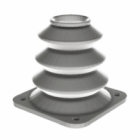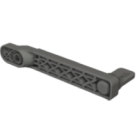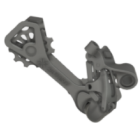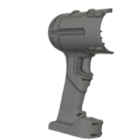Polish 3D printed
Sanding 3D prints is one of the most accessible and effective post-processing techniques for improving surface finish, especially for FDM-printed parts. While 3D printing allows you to create complex shapes, the layer lines left by the additive process often require manual refineEven the most precise 3D print often shows layer lines, minor imperfections, or matte textures straight off the build plate. For models that need to look finished, tactile, or customer-ready, surface refinement is essential. Polishing 3D printed parts helps enhance visual quality, feel, and in some cases, even durability. Depending on the material and application, polishing can range from light buffing to chemically smoothing the entire surface.
This chapter explains how to achieve polished results — whether you’re finishing PLA prints by hand or using solvent techniques for glossy ABS surfaces.ment — especially for parts that will be painted, assembled, or displayed. Whether you’re going for a smooth matte look or prepping a surface for a high-gloss finish, sanding helps eliminate visible stepping, support marks, and minor imperfections.
Mechanical polishing: from matte to smooth
Manual or mechanical polishing is the most accessible method for polishing 3D printed parts, especially those made using FDM. After sanding your model progressively with finer grit (typically ending at 800–2000), polishing compounds and buffing tools come into play.
Key techniques include:
- hand polishing with microfiber cloths and plastic polish paste (like Novus or Tamiya compound),
- rotary polishing using felt wheels or buffing attachments on a Dremel or drill,
- plastic polish sprays to add gloss and clarity after fine sanding.
Mechanical polishing is ideal for PLA, PETG, and resin prints where you want to retain sharp details while improving surface quality. It’s especially effective on curved or large visible surfaces.
Vapor polishing 3D printing
Vapor polishing 3D printing refers to a chemical finishing method that smooths thermoplastics like ABS or ASA by exposing them to controlled solvent vapors — most commonly acetone. The solvent slightly melts the surface, allowing layers to blend into a glossy, seamless finish.
This method is highly effective but requires precision and proper safety:
- Use a sealed chamber or vapor bath setup.
- Limit exposure time to prevent warping or loss of detail.
- Always ventilate properly and wear gloves, goggles, and a respirator.
Vapor polishing produces a high-gloss, injection-molded look, making it especially popular for functional parts, presentation models, and low-volume end-use components.
Note: PLA does not respond to acetone vapor, so this method is not effective for polishing PLA prints.
Choosing the right method
The best polishing method depends on the material, the desired finish, and the available tools. Mechanical polishing offers more control and is safer for home or educational environments. Vapor polishing is faster and more dramatic but best reserved for experienced users or industrial setups.
If you’re aiming for high-end, presentation-quality results, combining sanding, polishing, and even clear coating can elevate a 3D print well beyond its raw, layered appearance.
Explore also
- Removing supports from 3D prints
- Sanding 3D prints
- Sandblasting 3D prints
- How to fill gaps in 3D prints
- Priming 3D prints
- How to paint 3D print
- How to foiling 3D prints
- How to metal plating 3D print
Related categories













